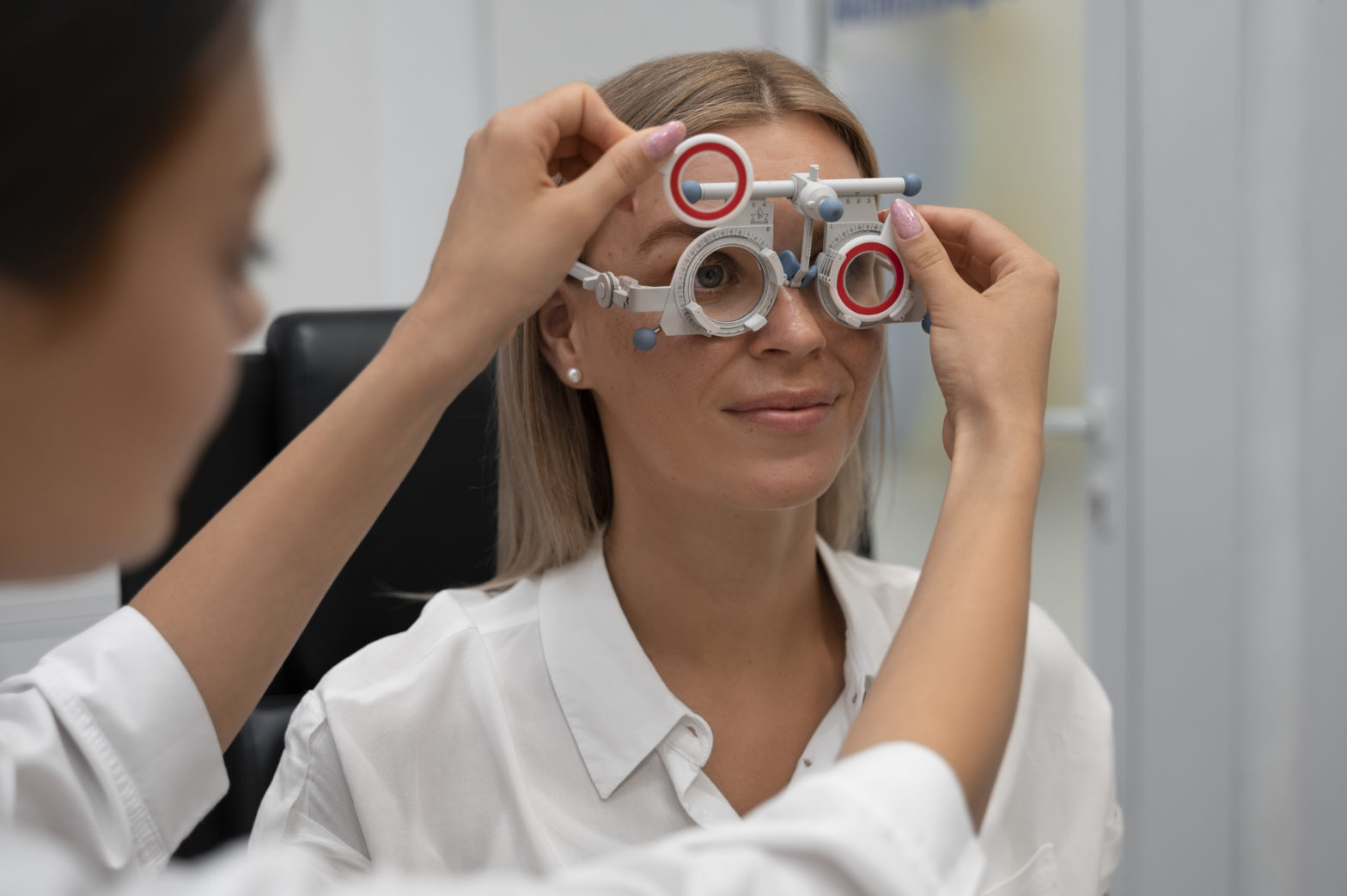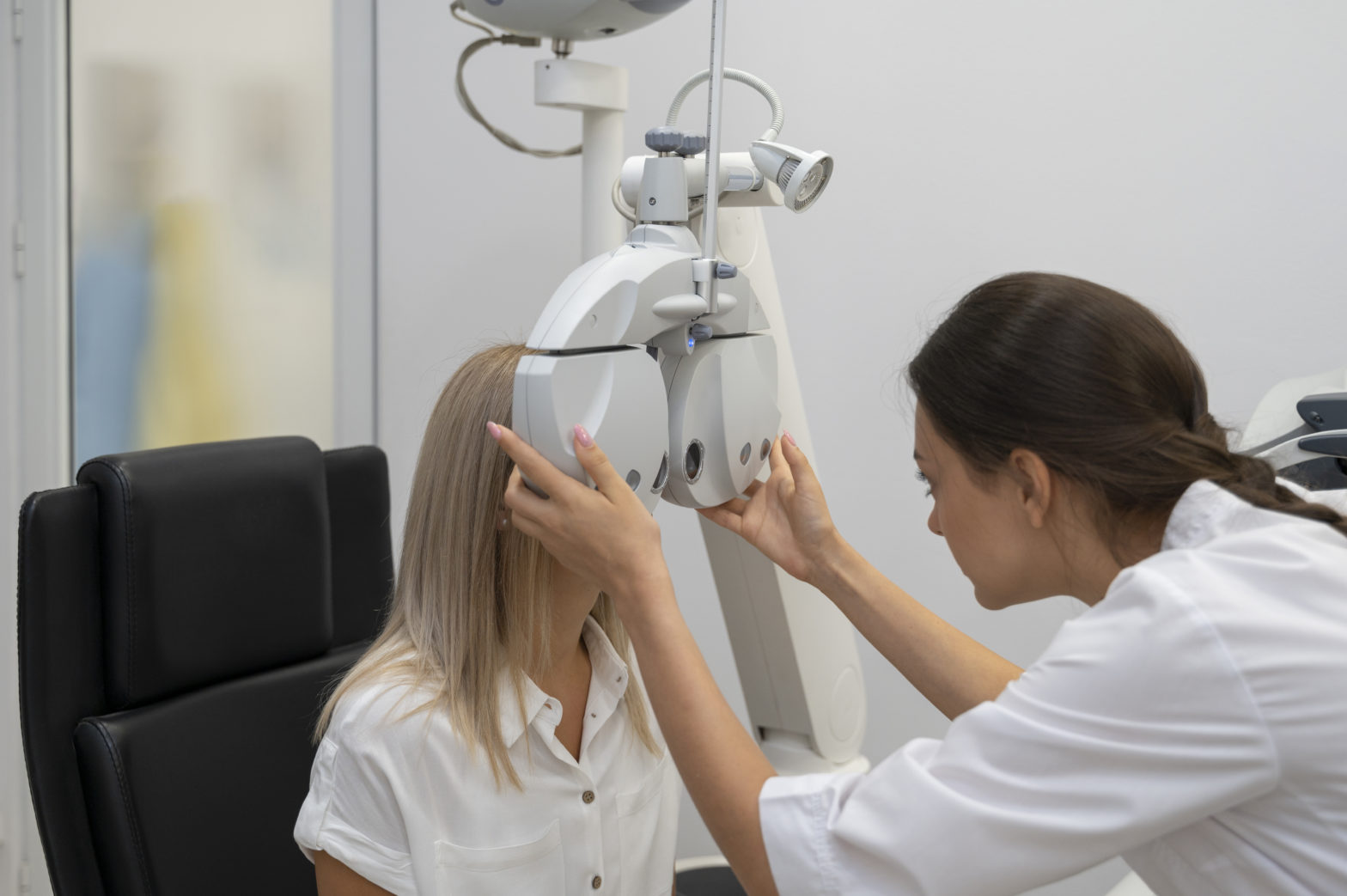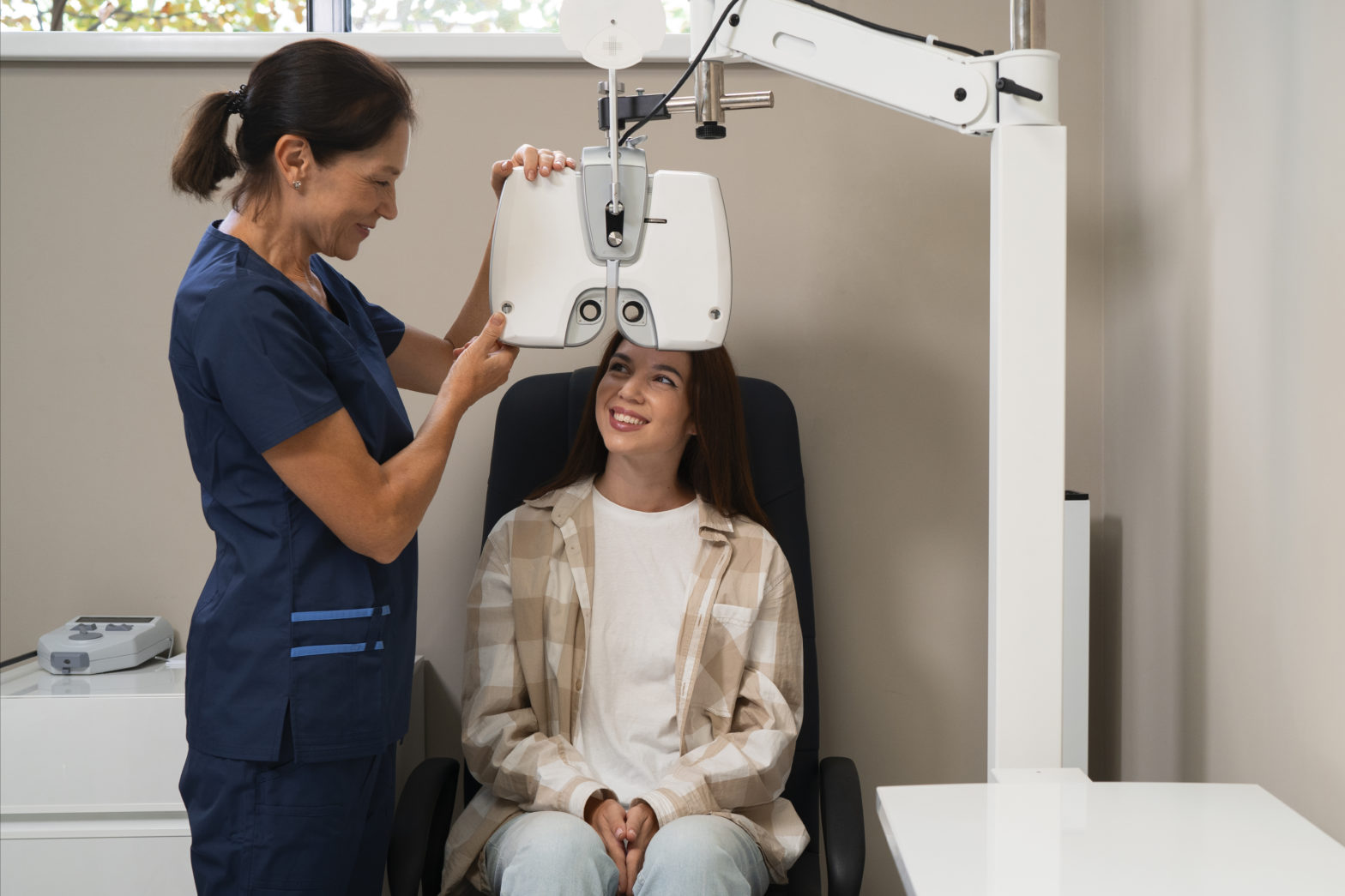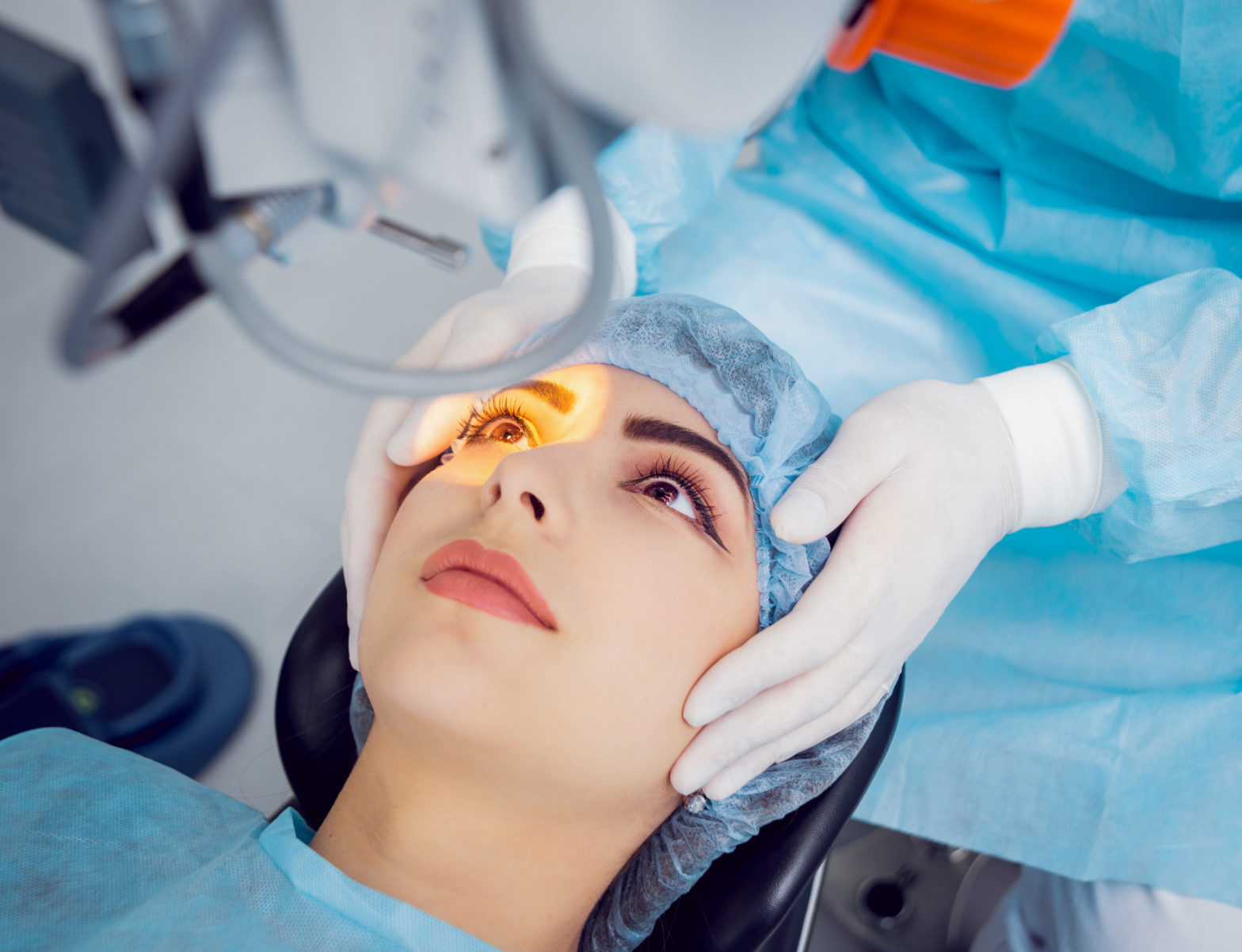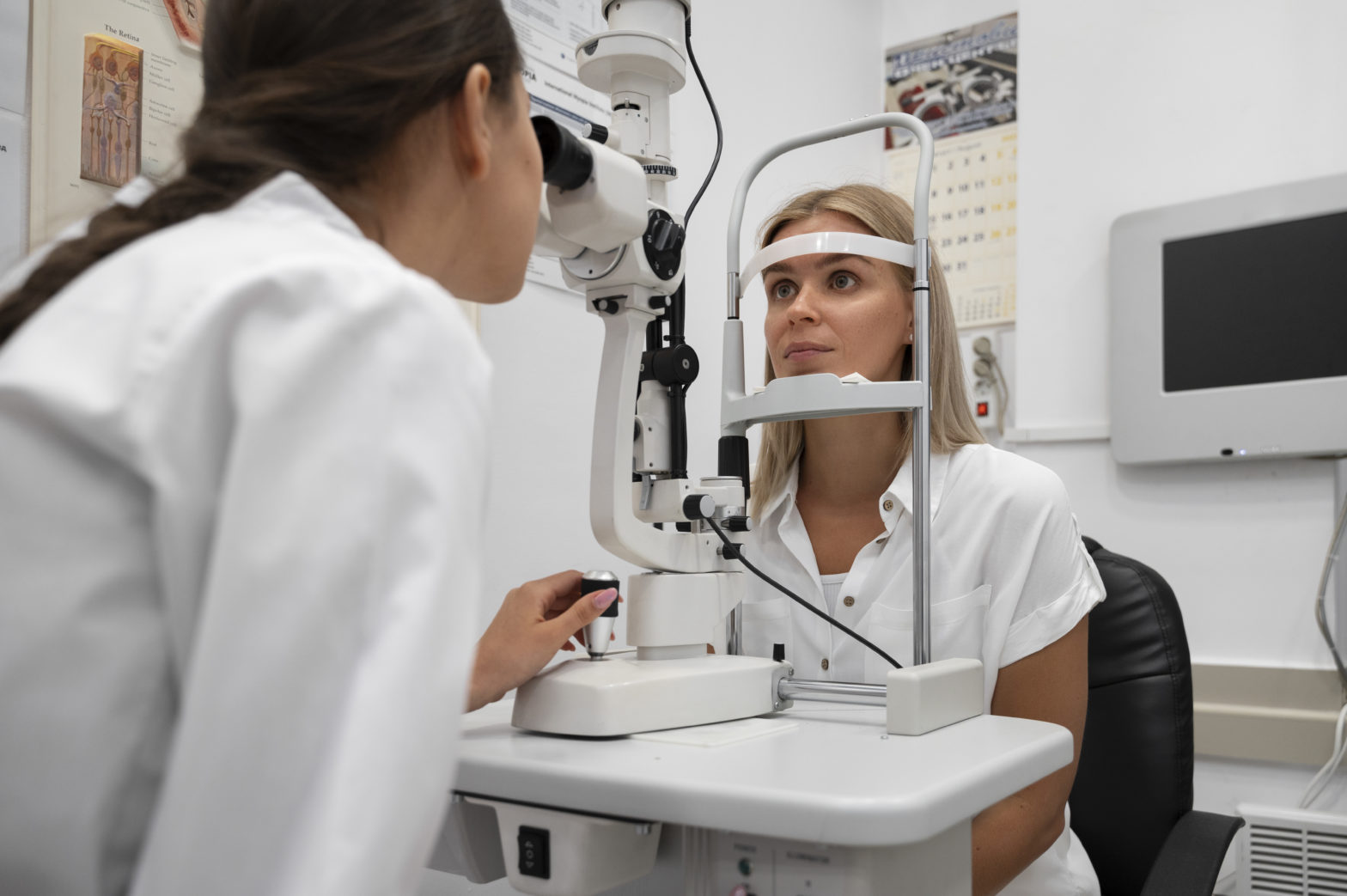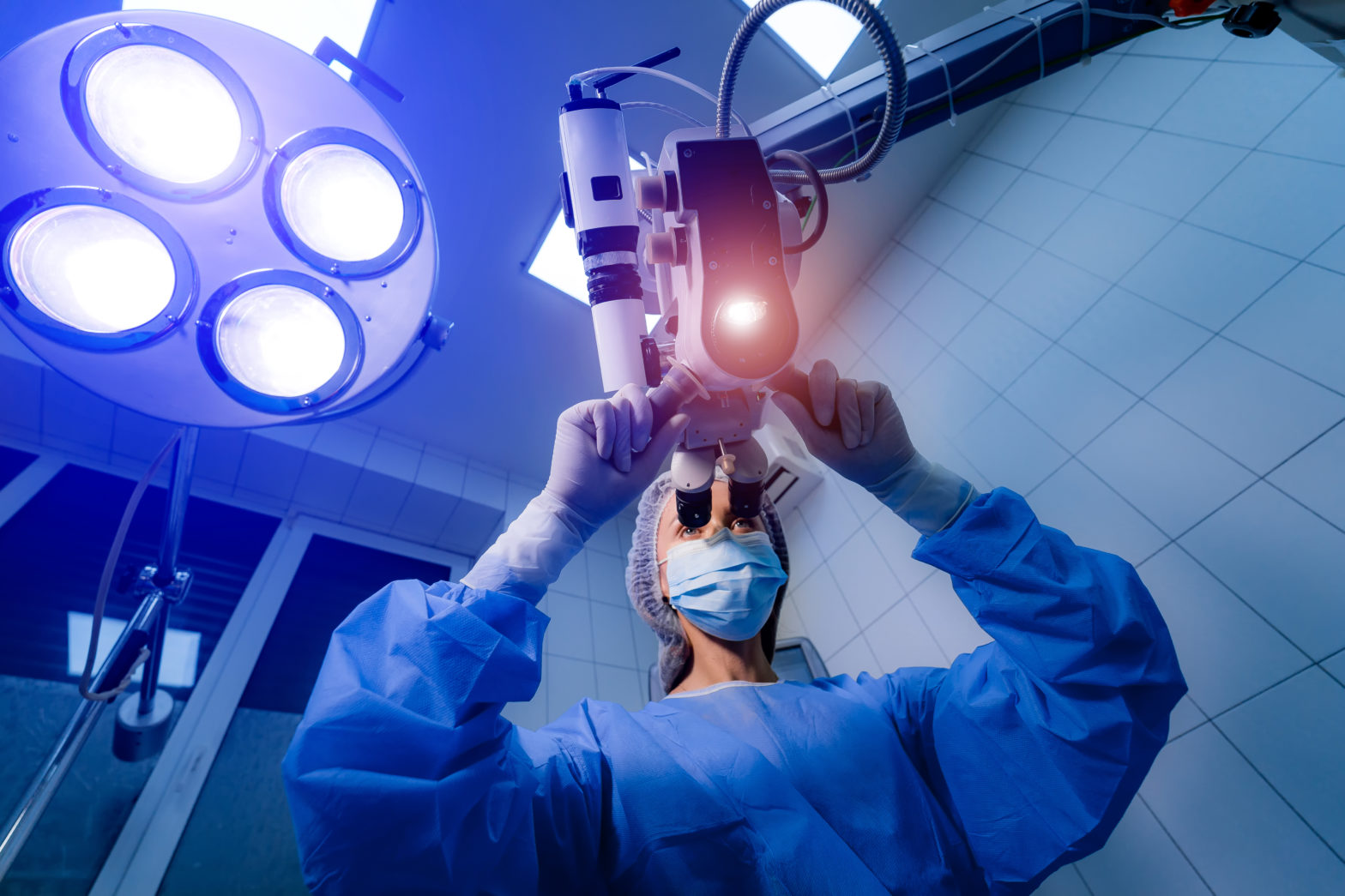- Home
- Treatments
- Lasik Surgery
What is Lasik Surgery?
LASIK surgery (Laser-Assisted In Situ Keratomileusis) is a popular laser eye surgery designed to correct refractive errors such as nearsightedness, farsightedness, and astigmatism. This laser surgery reshapes the cornea, allowing light to focus correctly on the retina, leading to improved vision without the need for glasses or contact lenses.
Many people opt for laser eye surgery due to its effectiveness, quick recovery time, and minimal discomfort. If you’re considering LASIK eye surgery, understanding the procedure, benefits, and risks is essential before making a decision.
Which Type of Eye Conditions Does LASIK Treat?
LASIK surgery is suitable for various vision conditions, including:
-
Nearsightedness (Myopia)
People with myopia have difficulty seeing distant objects clearly. LASIK surgery for eyes corrects this condition by reshaping the cornea to allow light to focus properly.
-
Farsightedness (Hyperopia)
Individuals with hyperopia struggle to see close objects. Laser eye surgery adjusts the corneal shape to enhance near vision.
-
Astigmatism
Astigmatism occurs due to an irregularly shaped cornea, causing blurred vision. LASIK surgery smooths out these irregularities, ensuring sharper vision.
How to Prepare for LASIK Surgery
Preparation is crucial for a successful LASIK eye surgery procedure. Here’s what to do:
-
Stop wearing contact lenses for at least two weeks before surgery to allow your cornea to return to its natural shape.
-
Schedule a comprehensive eye exam to ensure you are a suitable candidate for laser surgery.
-
Avoid applying eye makeup or creams on the day of surgery to minimize infection risk.
-
Follow your doctor’s instructions regarding medication and pre-surgery care.
LASIK Surgery Procedure
The LASIK eye surgery procedure is quick and typically completed within 30 minutes. Here’s how it works:
-
Numbing drops are applied to prevent discomfort.
-
A thin corneal flap is created using a femtosecond laser or microkeratome.
-
The cornea is reshaped using an excimer laser, correcting refractive errors.
-
The flap is repositioned, allowing natural healing to occur.
Most patients notice improved vision within a few hours after the surgery.
LASIK Surgery Side Effects
While What You Need to Know Like any medical procedure, laser eye surgery has potential side effects, though they are usually temporary.
-
Dry Eyes:
Temporary dryness is common after LASIK surgery, but eye drops help alleviate discomfort.
-
Glare and Halos:
Some patients experience glare or halos around lights, especially at night, but these effects fade within a few weeks.
-
Fluctuating Vision:
Vision may take a few days or weeks to stabilize completely after LASIK eye surgery.
Who is Not Recommended for LASIK Surgery?
While LASIK surgery for eyes is highly effective, some individuals may not be suitable candidates, including:
-
People with thin corneas – A thin cornea may not support the necessary reshaping.
-
Patients with severe dry eyes – Existing dryness can worsen after surgery.
-
Individuals with unstable vision – If your prescription changes frequently, LASIK may not be suitable.
-
People with certain medical conditions – Autoimmune diseases can affect healing post-surgery.
LASIK Surgery Recovery Time
Recovery from LASIK eye surgery is typically fast. Here’s what to expect:
-
First 24 hours – Mild discomfort, blurry vision, and sensitivity to light.
-
1 week – Significant vision improvement, but avoid strenuous activities.
-
1 month – Vision stabilizes, and most restrictions are lifted.
-
3-6 months – Full recovery, with optimal vision results.
Risks of LASIK Surgery
Although LASIK surgery is generally safe, it’s important to be aware of potential risks:
-
Under-correction or over-correction – Some patients may still need glasses after surgery.
-
Infection or inflammation – Rare but possible side effects.
-
Night vision disturbances – Halos, glare, or starbursts around lights.
-
Flap complications – Issues related to the corneal flap created during surgery.
LASIK surgery is a highly effective solution for those seeking to correct refractive errors and reduce dependence on glasses or contacts. Understanding the LASIK surgery procedure, potential LASIK surgery side effects, and LASIK surgery recovery time can help you make an informed decision. If you’re considering laser eye surgery, consult an experienced ophthalmologist to determine whether it’s the right choice for you.
Frequently Asked Questions (FAQs) about Lasik Surgery
Does laser eye treatment or vision correction last a lifetime?
While the effects of a laser eye treatment (LASIK treatment surgery) are permanent, the benefits can decrease over time. However, for most patients, the results of LASIK surgery will last forever.
Who is not suitable for the LASIK eye surgery procedure?
It is advisable to avoid undergoing the LASIK eye surgery procedure for patients on systemic medicines, preventing the complete recovery of the cornea. Other reasons for not performing laser eye operations on patients are systemic conditions. These are the diseases like diabetes or conditions wherein the collagen level in the body is not normal, for example, the Marfan syndrome. Also, if a patient cannot stare at a fixed object for a minimum of 60 seconds, the patient may not be a great candidate for LASIK eye surgery.
What must I expect before a laser eye treatment?
If you go for a LASIK surgery procedure, the doctor will require an initial baseline evaluation to determine if you are a suitable candidate for the laser eye operation.
How long do the eyes take to recover after the laser eye operation?
It can take up to 6 months to completely recover from a laser eye operation. In this phase, you may need to visit your doctor for several aftercare appointments. There might also be blurriness in certain stages, but it’s normal.
In addition, it will take some amount of time for the eyes to settle post-surgery. Therefore, you must attend the aftercare appointments regularly to maintain the lifetime guarantee validity.
What is the reason for blurry vision after laser eye treatment?
Blurred vision is common up to 6 months after the LASIK eye treatment, mainly because of the dryness of the eyes. It is best advised to use artificial tears at least once every hour and rest the eyes frequently to avoid dryness.
Does LASIK have an age limit?
There is no age limit for LASIK, and the surgery depends on the eye health of the individual, in addition to the visual needs. Patients with no organic reason for vision loss, such as cataracts or other medical complications, can easily go for a LASIK surgery.
How does one immediately feel after a laser eye operation
Immediately after LASIK treatment, the eyes may itch or burn or feel like something is stuck in the eye. There can be a certain level of discomfort and mild pain in some cases. The doctor may suggest a mild pain-relieving medicine for the same. The vision can be blurred or hazy.
How will I keep my eyes open during the laser eye treatment?
Instilling numbing eye drops helps with the urge to blink in the patients during the laser eye treatment. A device is also used to keep the eyes open in times of need during the surgery
Is laser eye operation painful?
LASIK eye operation is not painful. Before starting the procedure, the surgeon will use numbing eyedrops for both your eyes. While there might be a feeling of pressure during the ongoing procedure, there will be no feeling of pain.
Can laser eye treatment fix blurred vision?
Some people have a blurred vision right from birth due to some congenital disabilities, while others have developed a blurred vision with time. In some cases, blurry vision can be rectified with the help of LASIK eye treatment or surgery.
What happens in a Contoura LASIK surgery?
In this type of procedure, the tissues of the corneal surface are removed from the corneal surface (front part of the eye), which helps maintain the effects for a lifetime and are, therefore, permanent. The surgery helps with the correction of refractive error and clarity of vision.
Is laser eye surgery costly?
Contrary to public notion, LASIK is not a very costly treatment. It is imperative to keep in mind that laser eye surgery price can vary due to different factors like infrastructure, technology, equipment, ranging from Rs. 25000 to Rs. 100000.

Do not ignore eye trouble!
Now you can reach our senior doctors by booking an online video consultation or a hospital appointment
Book an appointment now